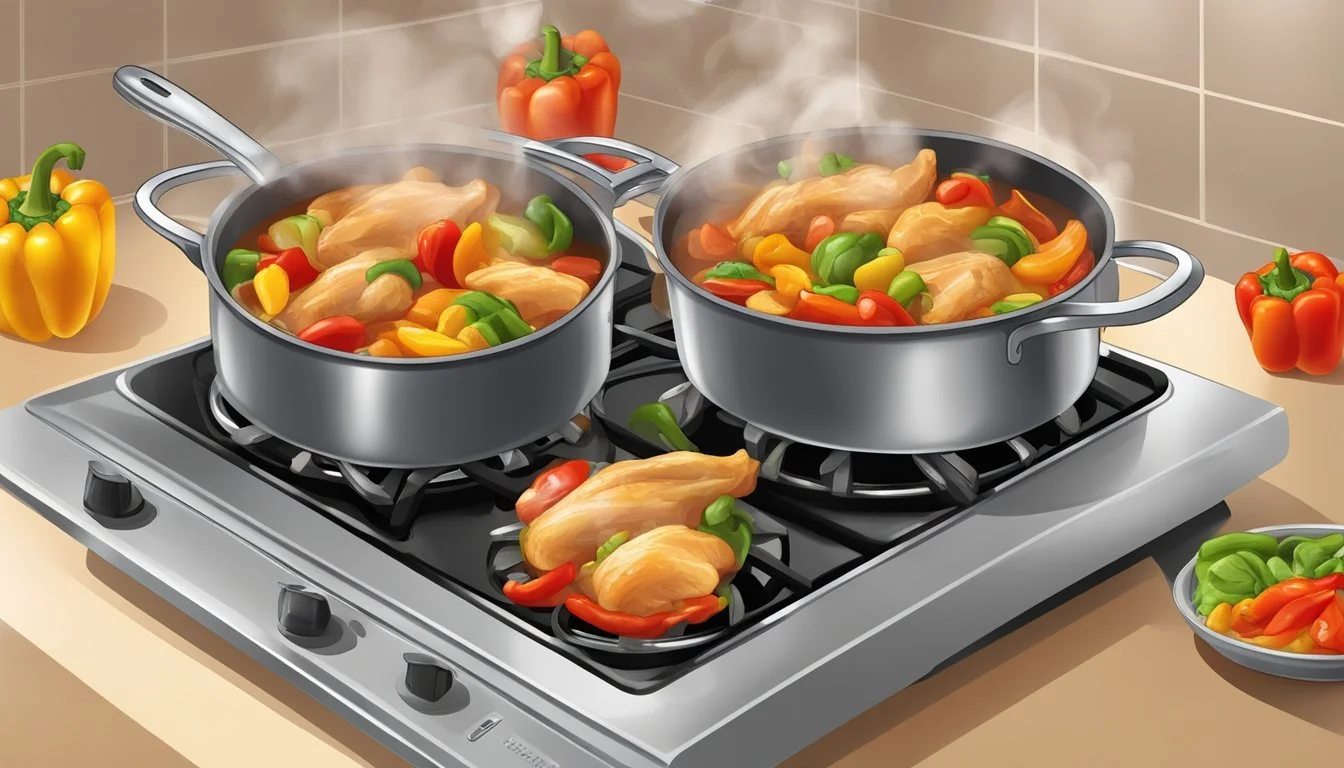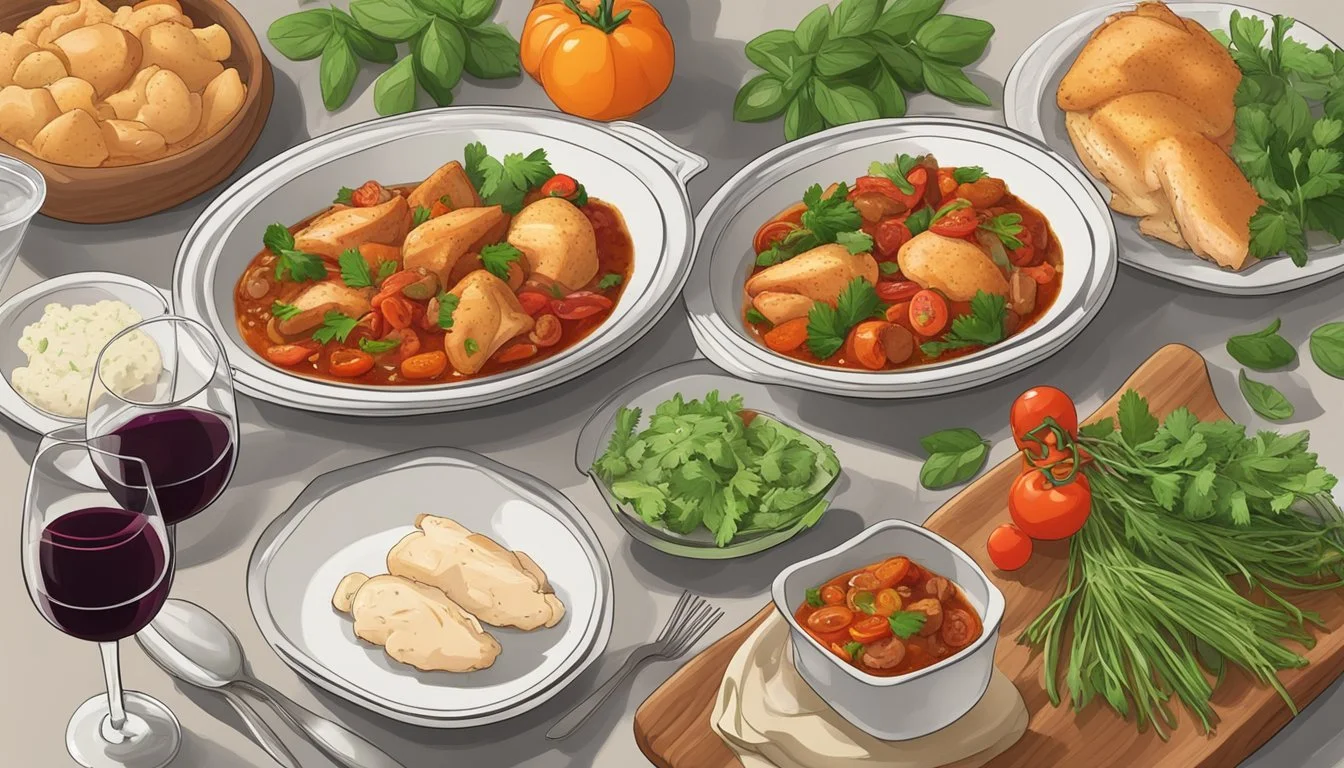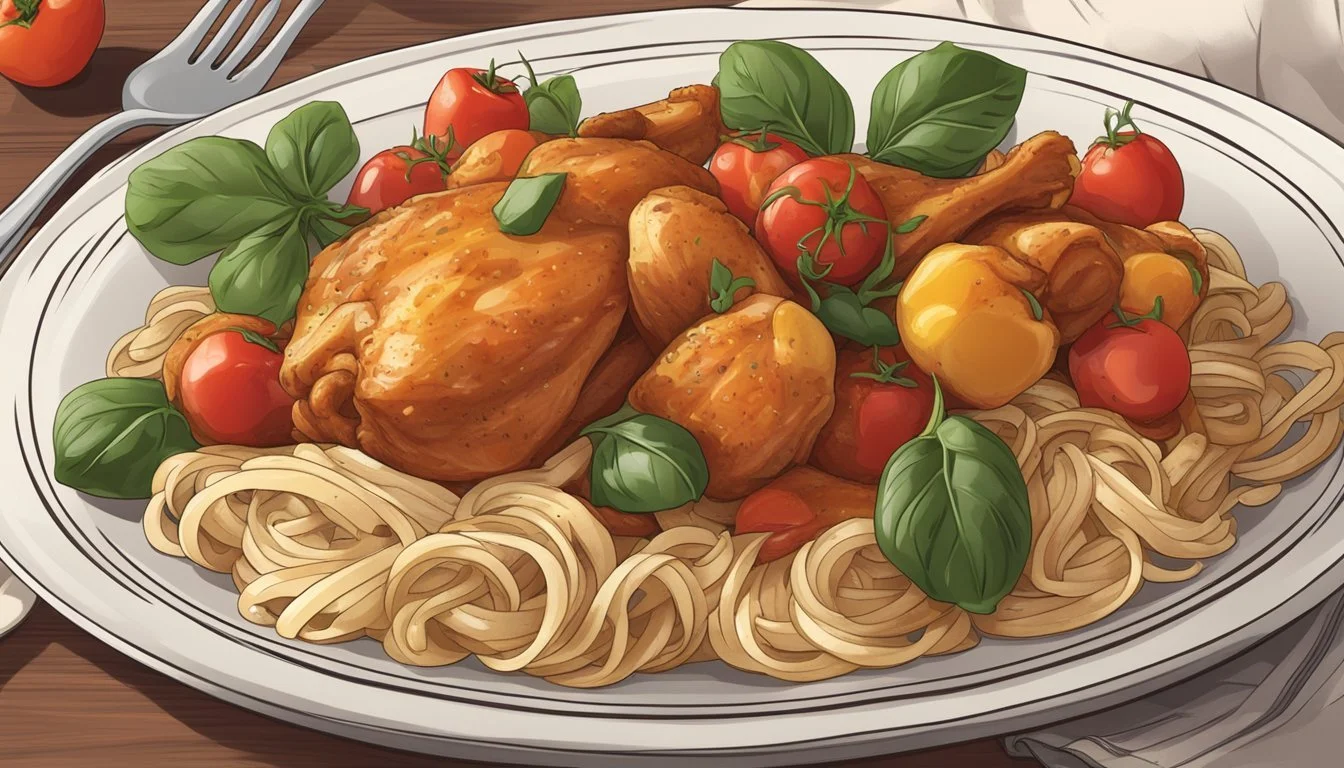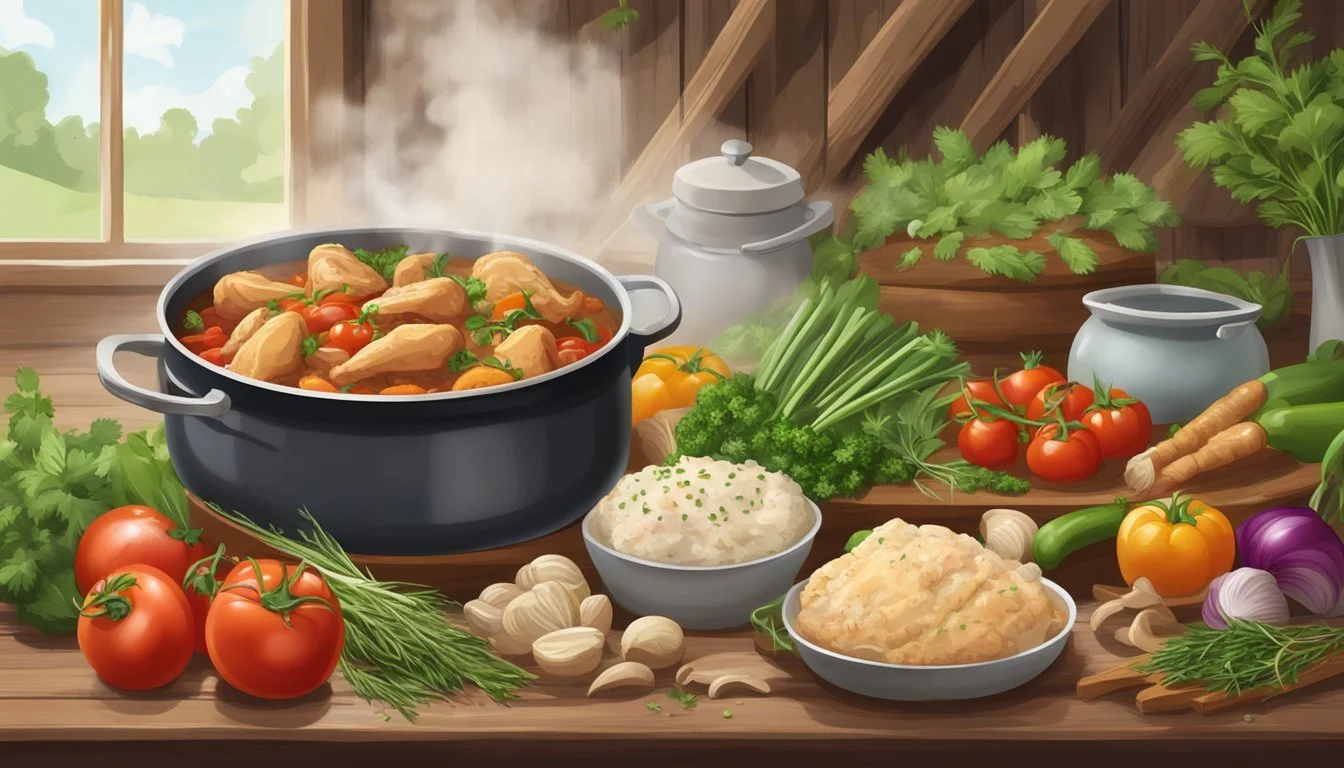How Long Does Gluten-Free Chicken Cacciatore Last?
Storage Tips and Shelf Life
Gluten-free chicken cacciatore is a delight for those who crave Italian cuisine without the gluten. Preparing this dish involves using gluten-free ingredients, such as gluten-free all-purpose flour, particularly when coating the chicken. Once cooked, this hearty meal can be enjoyed immediately or stored for future meals.
For those wondering, gluten-free chicken cacciatore lasts up to four days when stored in an airtight container in the refrigerator. This makes it a convenient option for meal prepping or enjoying leftovers. The rich flavors meld together even more beautifully over time.
Freezing is another excellent option for extending the dish's shelf life. Properly stored in the freezer, gluten-free chicken cacciatore can last up to three months, retaining its delicious taste and texture. This flexibility makes it an ideal dish for busy weeks and spontaneous cravings for Italian comfort food.
Understanding Gluten-Free Chicken Cacciatore
Chicken Cacciatore is a traditional Italian recipe known for its rich and robust flavors. Making it gluten-free ensures that individuals with celiac disease or gluten sensitivity can enjoy it safely.
Definition and Origins of Chicken Cacciatore
Chicken Cacciatore, or "hunter’s style" chicken, is a classic Italian dish that typically involves chicken braised in a tomato-based sauce with vegetables and herbs. This rustic meal has origins rooted in Italian hunting culture, where hunters would prepare a stew using available ingredients such as rabbit, chicken, tomatoes, onions, and herbs. The word "cacciatore" means "hunter" in Italian, reflecting the dish's wholesome and hearty nature. The gluten-free version stays true to its traditional essence while modifying ingredients to meet dietary needs, maintaining the authenticity of the original recipe.
Importance of Gluten-Free Cooking
Gluten-free cooking is crucial for individuals with celiac disease or gluten sensitivity as it allows them to enjoy their meals without adverse health effects. Standard Chicken Cacciatore recipes may include ingredients like wheat flour for dredging chicken, which needs substitution with gluten-free alternatives, such as gluten-free all-purpose flour. By using gluten-free ingredients, such as gluten-free chicken pieces and flour, cooks can create a safe yet delicious version of this dish. This practice ensures that all individuals can savor the flavors of this Italian classic without compromising their health, promoting inclusion and dietary mindfulness.
Gluten-Free Ingredients and Substitutes
Ensuring the use of gluten-free ingredients when preparing Chicken Cacciatore is crucial for those with gluten sensitivities or celiac disease. The selection of appropriate proteins, thickening agents, and vegetables enhances both flavor and safety.
Choosing Gluten-Free Proteins
Selecting the right protein is essential. Chicken breasts and chicken thighs are excellent choices. For a richer flavor, bone-in chicken thighs can be used. They provide additional moisture and depth to the dish.
Ensure the chicken is labeled gluten-free, especially if pre-seasoned, as some additives might contain gluten. Always check labels and consult with your butcher if uncertain.
Gluten-Free Thickening Agents
Traditional Chicken Cacciatore recipes might use all-purpose flour for dredging and thickening. In gluten-free preparations, alternatives are necessary.
Gluten-free all-purpose flour or gluten-free flour blends are great substitutes. They offer similar texture without gluten. When using for dredging, it’s important to coat the chicken pieces lightly to avoid clumping.
Rice flour or cornstarch can also be effective gluten-free options for thickening sauces. For a more nutritional boost, consider chickpea flour or almond flour.
Selecting Gluten-Free Vegetables
Vegetables play a pivotal role in Chicken Cacciatore. Common choices include onions, red bell peppers, and mushrooms. Ensure all vegetables are fresh and unprocessed to maintain their gluten-free status.
Including a variety of vegetables like carrots, bell peppers, and onions ensures a robust flavor. Mushrooms add an earthy note that complements the chicken.
Always wash and prepare vegetables separately to avoid cross-contamination. Opt for organic produce when possible, as it reduces the risk of pesticide residues, which is particularly important for those with sensitivities.
Choosing and substituting ingredients properly in a gluten-free Chicken Cacciatore not only ensures the meal is safe for those with gluten intolerance but also maintains the dish’s authentic flavor and texture.
Preparation Techniques and Cooking Methods
To make gluten-free chicken cacciatore, understanding the varied preparation and cooking methods is essential. Techniques like marinating, seasoning, and proper heat management are key to creating flavorful dishes. There are versatile options, whether you prefer using a Dutch oven, stovetop, slow cooker, or oven.
Marinating and Seasoning
Start by seasoning the chicken thighs or drumsticks with salt and pepper for optimal flavor. Some recipes recommend marinating the chicken with garlic, oregano, and fresh basil to infuse deeper tastes. A light coating of gluten-free all-purpose flour can be applied to the chicken pieces to aid in browning during cooking. This step ensures a rustic and tender texture.
Cooking in a Dutch Oven or Stovetop
For stovetop cooking, begin by heating olive oil in a Dutch oven over medium-high heat. Brown the chicken pieces in batches, cooking each side for 3-4 minutes to avoid steaming. Once browned, remove the chicken and sauté onions, bell peppers, garlic, and mushrooms until softened. Return the chicken to the pot, add canned tomatoes, sauce, and herbs like bay leaves. Simmer until the chicken is fully cooked and the sauce thickens.
Slow Cooking Variations
For those using a slow cooker, start by searing the seasoned chicken in a hot skillet until golden brown. Transfer the chicken to the slow cooker or crockpot and add ingredients such as onions, peppers, mushrooms, and tomatoes. Cook on low for about 8 hours or on high for 4 hours. This method allows the flavors to meld together, creating a rich and hearty sauce.
Baking and Final Touches
Baking is another option to create easy chicken cacciatore. Preheat the oven to 375°F (190°C). Brown the chicken in a skillet with olive oil. Transfer to a baking dish, surround with onions, peppers, mushrooms, and tomatoes. Pour over a mixture of tomato sauce, garlic, and herbs. Cover with foil and bake for about 45 minutes. Remove the foil for the last 10 minutes for a roasted finish. Add capers or fresh basil before serving for an extra burst of flavor.
Serving and Pairing Suggestions
To enhance the flavors of gluten-free chicken cacciatore, you can pair this dish with a variety of side dishes and suitable beverages that complement the rich, tomato-based sauce.
Accompaniments and Side Dishes
Rice: A steaming bowl of rice absorbs the savory sauce, creating a perfect balance between taste and texture. Consider white or brown rice for added nutrients.
Roasted Potatoes: Crispy on the outside and soft on the inside, roasted potatoes are a wonderful match. Season them with herbs to elevate the dish.
Zucchini Noodles: For a low-carb option, zucchini noodles provide a fresh and healthy complement. Their light crunch pairs well with the hearty cacciatore.
Pasta: Gluten-free pasta is an excellent choice, offering a traditional Italian dining experience. Sprinkle some cheese on top for extra flavor.
Garlic Bread: Crunchy on the outside and soft on the inside, gluten-free garlic bread enhances the meal with its buttery and garlicky charm.
Gluten-Free Beverage Pairings
Red Wine: A medium-bodied red wine, such as Chianti, enhances the richness of chicken cacciatore. Its subtle tannins and fruity undertones harmonize with the tomato-based sauce.
Dry White Wine: For those who prefer white wine, a dry Sauvignon Blanc or Pinot Grigio offers a crisp and refreshing contrast. Their acidity balances the robust flavors of the dish.
White Wine: A light and slightly sweet white wine like Riesling can also pair well, providing a playful sweetness against the savory elements.
Non-Alcoholic Options: Sparkling water with a twist of lemon or lime, or a robust herbal tea, can provide a refreshing counterpart for those who prefer non-alcoholic beverages.
These accompaniments and beverage pairings make for a delightful dining experience, enriching the flavors and making the meal more memorable.
Storage, Shelf Life, and Reheating
Proper storage and reheating methods ensure that gluten-free chicken cacciatore maintains its quality and safety. These guidelines cover refrigeration, freezing, and reheating techniques to extend its shelf life and preserve its taste.
Proper Refrigeration Techniques
Gluten-free chicken cacciatore should be cooled to room temperature before refrigerating. Place leftovers in an airtight container to prevent exposure to air, which can deteriorate quality. Store in the refrigerator at or below 40°F (4°C).
Shelf Life: Up to 4 days
Storage: Use shallow containers to cool quickly
Safety: Check for spoiled aroma or appearance before consuming
The tomato sauce component helps in maintaining moisture, but always inspect for any signs of spoilage.
Freezing and Thawing Methods
Freezing gluten-free chicken cacciatore extends its shelf life significantly. Use freezer-safe containers or heavy-duty freezer bags to prevent freezer burn. Label with the date for easy tracking.
Freezing Guidelines:
Shelf Life: Up to 3 months
Preparation: Cool completely before freezing
Storage: Portion into single servings for convenience
To thaw, move the frozen dish to the refrigerator for 24 hours. This slow thawing process preserves the texture and flavor.
Best Practices for Reheating
Reheat gluten-free chicken cacciatore properly to retain its nutrition and taste. The microwave and oven are both effective methods.
Microwave:
Use a microwave-safe dish
Cover loosely to avoid drying out
Heat in short intervals, stirring occasionally to ensure even heating
Oven:
Preheat to 350°F (175°C)
Place in an oven-safe dish, cover with foil
Heat for 20-25 minutes, or until the internal temperature reaches 165°F (74°C)
Rest the dish for a few minutes before serving to distribute the heat evenly. These practices ensure the dish remains delicious and safe to eat.
Nutritional Information and Benefits
Gluten-free chicken cacciatore is not only a flavorful dish but also offers various nutritional benefits that are especially important for those managing gluten sensitivities or celiac disease.
Caloric and Macronutrient Profile
A typical serving of gluten-free chicken cacciatore provides about 350-400 calories, making it a moderate-calorie meal option. The protein content, primarily from chicken thighs and drumsticks, ranges between 25-30 grams per serving, essential for muscle repair and growth.
Carbohydrates: With the inclusion of vegetables such as bell peppers and a gluten-free flour coating, the carbohydrate content is around 20-25 grams per serving. This dish is relatively low in carbs, making it suitable for those monitoring their carbohydrate intake.
Fats: The use of olive oil contributes healthy monounsaturated fats, totaling approximately 15-20 grams per serving. Olive oil is known for its heart-healthy qualities and anti-inflammatory properties.
Health Benefits of Gluten-Free Meals
Eating gluten-free chicken cacciatore can support a gluten-free diet, offering essential nutrients without the adverse effects of gluten. This is particularly beneficial for individuals with celiac disease and gluten sensitivities.
Nutritional Value: The dish is rich in vitamins such as Vitamin A (from bell peppers) and minerals like potassium and magnesium. These nutrients play crucial roles in maintaining healthy vision, muscle function, and electrolyte balance.
Allergens: By eliminating gluten, the risk of allergic reactions is reduced. This makes gluten-free chicken cacciatore a safer choice for those with multiple food allergies or autoimmune conditions.
Health Considerations: Consuming gluten-free meals can alleviate symptoms like bloating, fatigue, and headaches commonly associated with gluten sensitivity. Thus, it enhances overall wellbeing and digestive health.
Managing Dietary Restrictions
Managing dietary restrictions requires careful selection of ingredients to ensure they are gluten-free and safe. Gluten-free chicken cacciatore is crafted with gluten-free flour and avoids any gluten-containing ingredients.
Label Reading: It's essential to check product labels for potential hidden gluten sources. Look for certifications that ensure products are safe for celiac disease patients.
Cross-Contamination: When preparing this dish, maintaining a gluten-free environment ensures no cross-contamination occurs. Use separate utensils and cookware designated for gluten-free cooking.
By adhering to these practices, individuals can enjoy gluten-free chicken cacciatore while confidently managing their dietary needs.
Conclusions and Key Takeaways
Gluten-free chicken cacciatore, a cherished comfort food, ensures that those with gluten sensitivities can enjoy this classic Italian dish.
Properly stored, gluten-free chicken cacciatore typically lasts 3-4 days in the refrigerator.
For best results, store it in an airtight container to maintain its freshness and flavor.
To extend its shelf life, freezing is an excellent option. When frozen, this dish can last up to 2-3 months.
When reheating, ensure it is heated thoroughly to an internal temperature of 165°F (74°C) to maintain food safety.
When participating in a cooking class, it’s essential to learn proper storage techniques to enhance the longevity and taste of gluten-free chicken cacciatore. This knowledge can significantly impact the quality of your dish over time.
These practices help retain the integrity and flavor of the dish, ensuring it remains a go-to comfort food for multiple meals.







